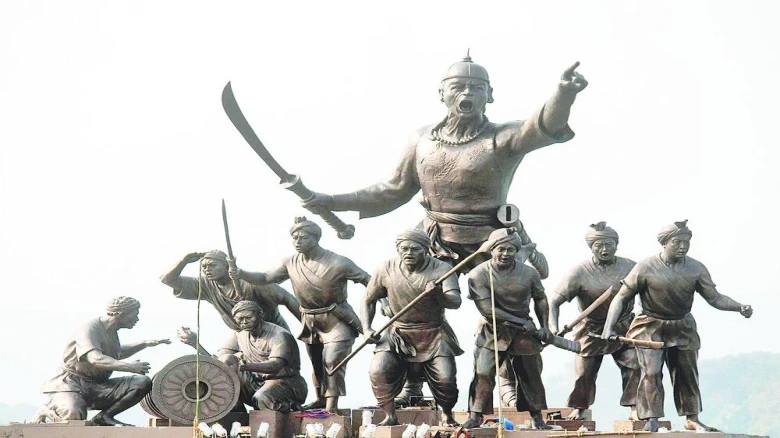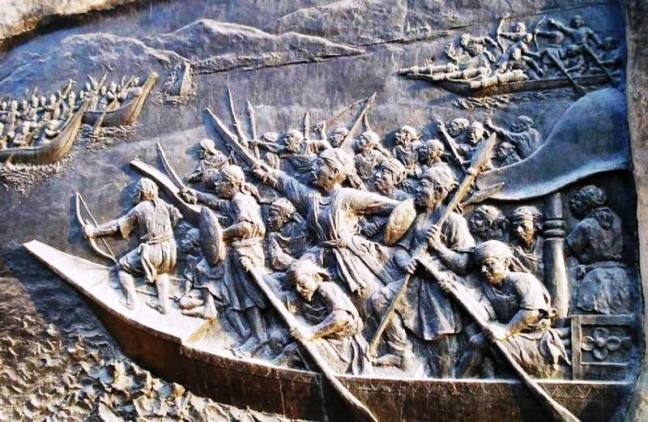Regional

So, who was Lachit Borphukon, and why is he important in the Assamese nationalism narrative?...
Digital Desk: Assam is celebrating the 400th birth anniversary of one of the state's greatest sons, 17th-century Ahom general Lachit Borphukan, with a three-day event in the national capital. Prime Minister Narendra Modi will be the chief guest at the Assam government's valedictory celebration on November 25 at New Delhi's Vigyan Bhawan.
While Lachit Diwas is observed on November 24 every year, this year, in honour of the 400th anniversary of Lachit's birth, a number of events have been planned in Assam over the past few months. The three-day event in Delhi began on November 23 with the opening of an exhibition by Finance Minister Nirmala Sitharaman.
During the ceremony, Assam's chief minister, Himanta Biswa Sarma, stated that the valour of Ahoms and Lachit Borphukan, as well as other such dynasties in the country, had been overlooked in Indian history. He claimed that this initiative will make it easier for people to recognise the nation's real heroes. The chief minister declared that prime minister Narendra Modi will attend the concluding ceremony on Friday, while home minister Amit Shah will launch a documentary on Lachit Barphukan on November 24.
While the entire nation will be commemorating the great commander's birthday, people should be aware that history would have taken a different turn if Lachit Borphukan had not existed. If the legendary 17th-century Ahom General had not delivered a crushing defeat on the Mughals in the 1671 Battle of Saraighat, the Northeast would almost certainly be different.
So, who was Lachit Borphukon, and why is he important in the Assamese nationalism narrative? Let's find out here
History of the Ahom kingdom
The Ahom kings ruled large parts of what is now known as Assam for nearly 600 years, from the early 13th century to the early 19th century. This was a rich, multi-ethnic dynasty that covered the upper and lower parts of the Brahmaputra valley, surviving on rice cultivation in its fertile grounds.

From the time of Jahangir until the reign of Aurangzeb, the Ahoms fought a series of conflicts with the Mughals from 1615 to 1682. In one of the first major military conflicts, the Mughals won a partial victory in January 1662, seizing sections of Assam and briefly capturing Garhgaon, the Ahom capital.
Under Ahom King Swargadeo Chakradhwaja Singha, the counter-offensive to recapture lost Ahom territories began. After the Ahoms won some early victories, Aurangzeb ordered Raja Ram Singh I of Jaipur in 1669 to reclaim the lost land, which resulted in the Battle of Saraighat in 1671.
The Legend of Lachit Borphukan
Lachit was a great military commander who was fully acquainted with the topography of the Brahmaputra valley and the surrounding hills. King Charadhwaj Singha appointed him as one of the five Borphukans of the Ahom kingdom, with administrative, judicial, and military responsibilities.

Unlike the Mughals, who favoured open conflicts with vast armies, Borphukan chose guerilla tactics, which gave his small, but fast-moving and capable army an advantage. Lachit inflicted damage on vast Mughal camps and immobile fortifications, similar to Shivaji's battles with the Mughals in Marathwada. His attacks would kill unwary Mughal soldiers while frustrating the great forces that were too slow to reply.

When the monsoon arrived, the Mughals' tactics became much more problematic. However, after the Mughals successfully camped around the foothills of Alaboi, the Ahom ruler directed Borphukan to launch a frontal attack, which resulted in the deaths of approximately 10,000 Ahom warriors and ended in a weary Mughal victory in 1669.
As the Mughals sought to make their way down the valley, they realised that travelling by the river would be faster. Lachit, a brilliant naval warrior and strategist, constructed an elaborate web of surprise pincer attacks. In "The Comprehensive History of Assam," historian H K Barpujari claims that the Ahom soldiers used both a frontal attack and a surprise strike from behind. They pretended to be under attack with a few ships from the front, which convinced the Mughal fleet to advance. The Mughals vacated the waterways behind them, from which the main Ahom fleet struck and won convincingly.
.webp)
Lachit Borphukan died a year after the Battle of Saraighat from a long-festering illness. In truth, he was severely unwell at the Battle of Saraighat, when he heroically led his forces to victory.
Lachit Borphukan in Assamese culture
Every culture and community has its own set of heroes. Lachit Borphukan's heroics have become a symbol of resistance to outsiders against all odds. He has evolved into one of the greatest Assamese heroes, representing the bravery, intelligence, and strength that define Assamese identity.

Leave A Comment